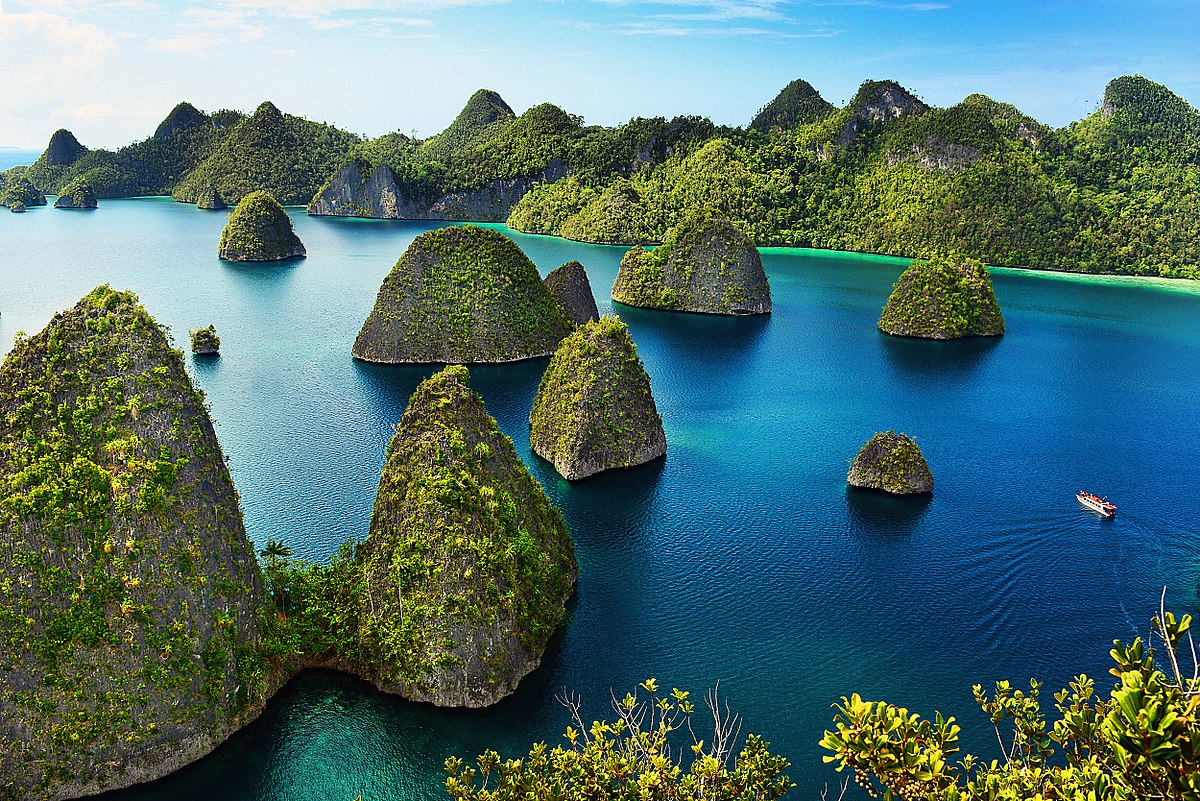
From Paradise to Crisis: What’s Happening in Raja Ampat?
Kehidupan di perantauan • 19 Juni 2025
Raja Ampat is an archipelago located in West Papua Province, Indonesia, known for its internationally recognized natural beauty. With more than 75% of the world’s hard coral species and thousands of marine fish species, Raja Ampat is home to the largest marine biodiversity on the planet. However, behind its stunning beauty, Raja Ampat is now facing various challenges that threaten its sustainability. Currently, Raja Ampat is showing signs of damage due to uncontrolled mineral exploration and mining.
Threats from Nickel Mining

Nickel is a critical metal for the battery industry, particularly for electric vehicle batteries, with global demand steadily increasing. In recent years, nickel mining activities in the vicinity of the Raja Ampat region have intensified. Some of the potential threats posed by nickel mining to Raja Ampat include:
Damage to Marine Ecosystems
Water Pollution:
The process of extracting nickel can produce hazardous waste, such as heavy metals and chemicals, which contaminate rivers and oceans. This pollution threatens coral reefs—vital habitats for many marine speciesand further damages already fragile marine ecosystems.
Degradation of Water Quality:
Poorly managed nickel mining operations can lower the quality of water surrounding Raja Ampat, adversely impacting marine life, including fish and coral reefs.
Deforestation and Loss of Habitat
Deforestation: Land clearing for nickel mining can result in significant deforestation. This not only threatens terrestrial biodiversity but also risks the destruction of wildlife habitats, including those of endemic species that are found nowhere else.
Soil Erosion:
Logging activities can lead to soil erosion, which subsequently introduces sediment into the ocean, damaging coral reefs and other vital marine ecosystems.
What is the Impact of Raja Ampat’s Destruction?
The natural beauty of Raja Ampat, a major attraction for international tourists, is now under threat. Below are some of the impacts of the ongoing destruction:
Eroded Marine Ecosystems:
The coral reefs in Raja Ampat are among the richest and largest in the world. However, water pollution and the degradation of water quality due to mining activities are threatening their survival. The loss of these reefs would result in the destruction of habitats for thousands of species of fish and other marine organisms, leading to a significant decline in the region’s aquatic biodiversity.
Loss of Tourism Revenue:
Raja Ampat is one of the most popular natural tourist destinations, especially for international divers. Damage to coral reefs and marine pollution can reduce the area’s appeal, leading to a decline in tourism. This, in turn, threatens the livelihoods of local communities who rely on the tourism industry, such as tour guides and innkeepers.
Soil Erosion and Flooding:
Logging for mining purposes worsens soil erosion, leading to increased sedimentation in the ocean. The sediment that enters the water can damage coral reefs and reduce water clarity, which is crucial for marine ecosystems. Moreover, intensified erosion heightens the risk of natural disasters, such as floods and landslides, which can destroy infrastructure and increase the economic burden on local communities.
Loss of Cultural Heritage:
In addition to its rich biodiversity, Raja Ampat holds significant cultural value for indigenous communities. Many locals live traditionally, relying on nature for their daily sustenance. Damage to the environment could threaten the survival of their culture, which is deeply intertwined with the preservation of their natural surroundings.
Migration and Social Instability:
Environmental degradation and the depletion of natural resources can compel people to seek new livelihoods, leading to significant migration. This population shift may place additional pressure on other regions, which may not be equipped to handle the influx, resulting in social instability and conflicts over resources.
These impacts highlight the significant risks posed if the destruction of Raja Ampat continues unchecked.
Therefore, the government, local communities, and the private sector must collaborate in finding a balanced solution that supports both development and conservation, ensuring the preservation of Raja Ampat’s beauty for future generations.

